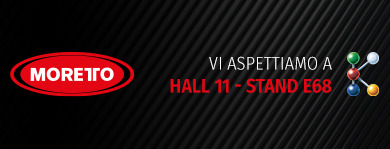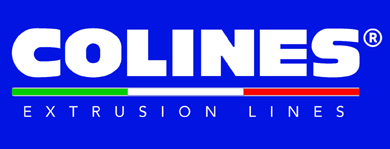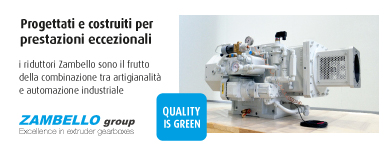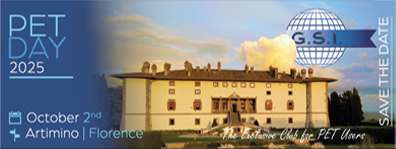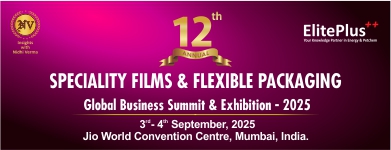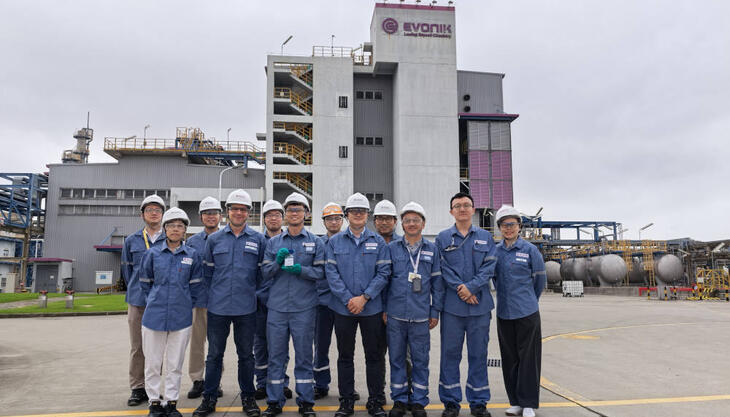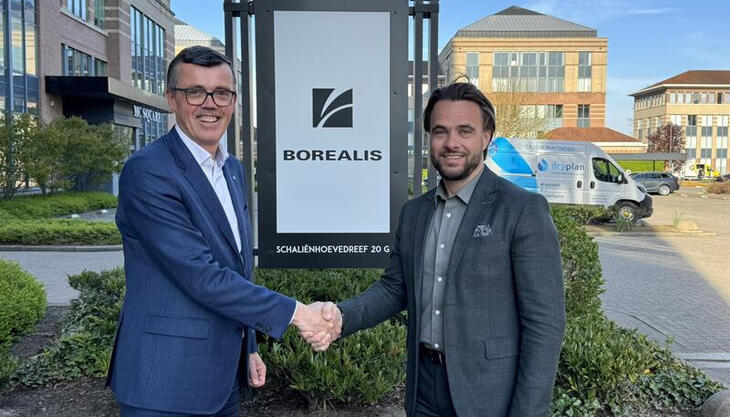Using SABIC’s tough and energy-efficient LEXAN™ sheets, the ICEhouse™ represents how structures can easily be built, disassembled and reused with advanced materials supporting the circular economy. The ICEhouse - where ICE stands for Innovation for the Circular Economy - was designed and built by William McDonough and his companies, William McDonough + Partners and WonderFrame LLC, in close collaboration with SABIC.
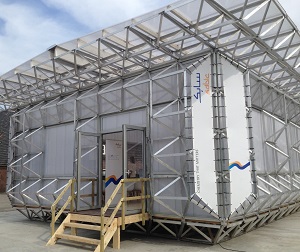 It recently was reassembled in the Circular Valley in Hoofddorp, the Netherlands’ national hotspot for the circular economy.
It recently was reassembled in the Circular Valley in Hoofddorp, the Netherlands’ national hotspot for the circular economy.The ICEhouse uses a revolutionary aluminium frame structure and several forms of SABIC’s LEXAN sheet, including high-insulating, nanogel-filled LEXAN™ THERMOCLEAR™ multiwall sheet for cladding. The ICEhouse incorporates several forms of SABIC’s polycarbonate LEXAN sheet materials, which can be recovered and continuously reused. SABIC’s LEXAN sheet portfolio provides valuable options to architects and designers seeking sustainable building solutions and has potential to contribute to LEED (Leadership in Energy and Environmental Design) certification, in part through its use of recycled content. LEXAN multiwall sheet also typically delivers a combination of very high thermal insulation and climate-control performance to enhance energy conservation, as well as excellent light transmission for enhanced aesthetics and comfort. The nanogel-filled LEXAN multiwall sheet used on the translucent walls and ceilings of the ICEhouse may be an excellent material for offering energy savings of up to 50% compared to monolayer glass.
SABIC EXPANDS ITS PORTFOLIO OF FOAMABLE POLYMERS
SABIC regards polymer foam technologies as essential
to meet growing needs for improvements in sustainability and efficiencies along
global production and supply chains. They offer material and energy savings
while retaining or even improving product performance; and they offer benefits in
thermal and acoustic insulation, cushioning and protection. SABIC is helping to
improve these benefits by enhancements in physical properties and foamability
of the polymers themselves.
Now, SABIC is expanding its portfolio to include more polyolefins (including POP elastomers and POP plastomers), and engineering thermoplastics such as LEXAN™ polycarbonate, modified PPE (NORYL™) and PEI (ULTEM™).
Several breakthrough innovations are in the process of
being commercialized. SABIC® LDPE 2502X0, for example, offers special benefits
for the physical foam extrusion process, as well for the resulting lightweight
foams. SABIC® LDPE 2402CX0 offers benefits for crosslinkable (XL) foam
extrusion processes. The XL foams have an improved properties-to-weight ratio,
offering the possibility to use them in higher added-value applications.
A VAST PIPE PORTFOLIO
As part of its overall vision of reinforcing its position in the chemical industry as a whole, SABIC intends to be the preferred supplier of solutions across the pipes industry. Its strength lies in its leading combination of materials and technologies, its cooperative efforts with suppliers and customers along the value chain, and its global supply network across the major continents.Solutions available now and in the pipeline:
SABIC is focusing on its customers which are active in the following four main areas in the pipes industry: domestic (water, gas, conduit, ventilation); infrastructure (for transport of clean and waste water and gas, as well as cable conduits); industrial (including large diameter pipe for oil & gas); and agriculture & aquaculture.
Hot and cold water pipes
SABIC is introducing special grades of polyethylene called PE-RT (polyethylene with raised temperature resistance) with improved high temperature resistance, which may be excellent candidates for hot and cold water pipes. Advantages of PE-RT include:
• better high temperature performance than standard PE;
• better low temperature impact resistance than standard polypropylene random copolymer (PP-R);
• ability
to weld and recycle.
Infrastructure pipes
SABIC® HDPE grades are typically used for pipes which should safeguard the distribution of water and energy. SABIC® PP RELY grades are typically being used to offer safe handling for urban sewage and rainwater.
The introduction of the SABIC® PP RELY family is an example of the success of this approach. This technology enables the production of a special polymer design in PE100 grades with excellent low sag properties which SABIC’s customers typically use for producing the most challenging pipe dimensions and with enhanced resistance to slow crack growth.
Superior crack resistant solutions
A method that SABIC developed for assessing the long-term behavioural properties of plastics recently became a recognised industry standard, ISO 18488. This so-called “strain hardening test” method reduces the time and cost taken to test the slow crack growth (SCG) resistance of high density polyethylene (HDPE), with particular relevance for pressure pipes. The method is easy to implement in laboratories, is used in the development of new grades by researchers, and may also very valuable as a batch release test for resin suppliers.
SABIC is the first company to implement this method at its production site. New pipe materials with an enhanced SCG resistance, such as SABIC® VESTOLEN A RELY 5922R, were developed specifically for can be used in applications employing the latest pipe laying installation methods. Apart from their good mechanical properties, SABIC® VESTOLEN A RELY 5924R and 5922R have a further convincing advantage: their unique rheological and morphological properties could provide processors with considerable energy savings and help them reduce their carbon footprint.
Solutions for agriculture and aquaculture
With conventional methods of farming and fishing already reaching their limits, SABIC has developed a number of alternatives for such techniques as pressure and drip irrigation. SABIC® LLDPE 0132HS00 is a hexene-1 copolymer that provides high mechanical toughness and stress crack resistance is typically used for advanced drip irrigation systems. SABIC® VESTOLEN A 5061R is typically used for pressure irrigation of arable land. SABIC® VESTOLEN A and SABIC® PE100 are typically used for the construction of large on and offshore fish cages. SABIC® VESTOLEN P is typically used for heating and cooling of farms and larger agricultural complexes.
Industrial pipes
Geothermal pipes made with SABIC® VESTOLEN RELY PE100-RC may provide additional safety and protection of ground water resources. Grades used for mining and slurry pipes can reduce the total cost of ownership by offering a long service life due to their high resistance to abrasion and corrosion. For chemical plants, SABIC® PP is typically used for the transport of chemical waste. In the food industry SABIC® VESTOLEN P is a durable substitution for steel pipe systems for the transport of various fluids at low and elevated temperatures.
SABIC is also active in the area of HDPE coatings which are typically used for steel pipes. These may extend the lifetime of the pipe by preventing corrosion. In laboratory tests, SABIC grades have been shown to enable higher line speeds than rival products, with lower necking at the extruder die head.
A new co-operation with Arkema, a leading supplier of high performance materials, represents SABIC’s strengthened focus on this market. It has kick-started the development of a package of raw materials which are typically used by the steel pipe coating industry. For example, a new polyethylene (PE) grade offers manufacturers favourable processing characteristics and long-term protection against corrosion of metal pipes used in the oil and gas industry. First trials have delivered excellent extrusion results, with higher output and better surface finish versus a benchmark product.
Engineering thermoplastics
In addition to its extensive portfolio of polyolefins, SABIC also offers a wide range of engineering thermoplastics which can be used for pipes. SABIC’s NORYL™ polyphenylene ether/polystyrene blends provide a wide variety of solutions for specific application requirements, particularly for molded components. They have best-in-class hydrolytic stability and very good heat resistance, enabling them to perform well in both hot and cold water applications. ULTEM™ polyetherimide resin has excellent mechanical performance in high heat and chemically challenging environments. CYCOLAC™ and CYCOLOY™ plateable ABS and ABS/polycarbonate resins, with their resistance to cleaning chemicals and ability to create parts with a smooth finish, are considered by our customers as ideal for use in components such as taps and spouts. LNP compounds, based on a wide range of polymers provide exceptional mechanical performance in highly demanding applications such as submersible pump housings.





